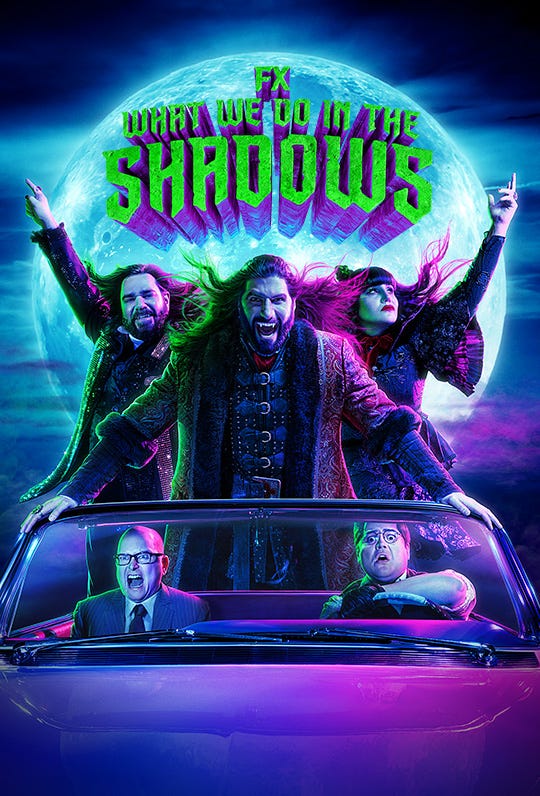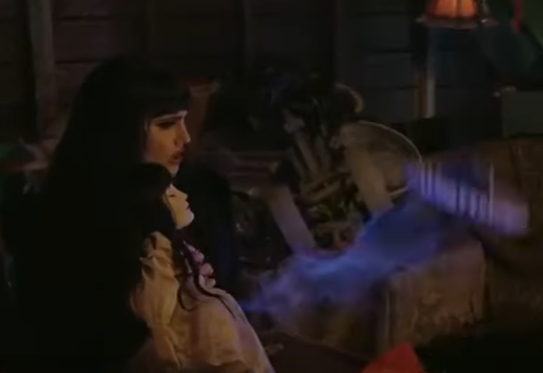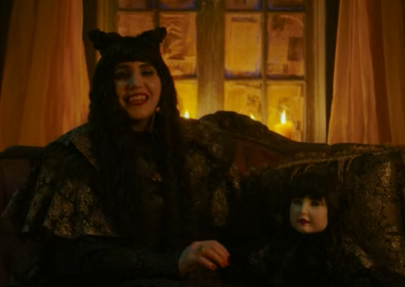How What We Do In The Shadows and enough IFS to be dangerous helped me negotiate a cease-fire with my inner critic.

Like countless others, one of the ways that I have dealt with the trauma of my past is writing about it. I have been engaging in a pretty relentless (heh) self-inventory as part of a long-term journey towards healing over the past several years. As part of that I’ve read dozens of books covering the subject of trauma, positive self-talk, and other such subjects. I’ve examined how I carry trauma and which ‘personality quirks’ of mine are actually trauma responses. Few pieces of media have been as helpful or insightful to me as one of Nadja’s storylines on FX’s What We Do In The Shadows.
FX’s series What We Do In The Shadows is based on the Jemaine Clement / Taika Waititi movie of the same name. Instead of following New Zealand vampires like the movie does, the television series mainly follows four vampires (and Guillermo) who live in Staten Island.
Initially, Darren and I started watching because we’d seen Mark Proksch (Colin Robinson) before. Not only are we fans of The Office, but his episodes in Better Call Saul are unforgettable and lead us to find his yo-yo shenanigans. We caught a couple of clips of the show online and then decided to plunge right in. The absolute absurd hilarity of vampires in modern life was exactly the sort of media we needed.
I’m a sucker for anything that includes inventive costuming, so it was no surprise that I fell for Natasia Demetriou’s character Nadja. The beautiful Nadja of Antipaxos spends a large amount of time making everything funnier and more Victorian-looking.

In Ghosts, the second episode of season 2, the vampires deal with a ghost infestation of their Staten Island mansion. Each ghost has unfinished business. In Nadja’s case, her ghost is hanging around to see Nadja achieve something. At first, the two bicker pretty horribly. After all, Nadja’s ghost has been hanging around, watching Nadja waste her life! The two eventually realize how similar they are, and Nadja decides she wants her ghost to stay with her. They decide that Nadja’s ghost should inhabit a doll found in the attic.
This was such a brilliant move for many reasons. First, it allows Natasia an additional character to play. Second, the doll is unendingly cute, and seeing how the costumers and stylists make sure that she matches human-sized Nadja is always a delight.

Up until episode 7 of season 3, ‘The Siren,’ Nadja-doll is very much attached to Nadja and her point of view (though there is a hilarious moment between Nadja-doll and Colin Robinson). In ‘The Siren’, which documents a particularly challenging time for Nadja, Nadja is seen completely neglecting Nadja-doll, who decides she doesn’t like feeling like an extra puzzle pieces (puzzles don’t work that way!), and strikes out on her own. Eventually this results in a surreal chase as the doll leaps from object to object as Nadja follows after her, begging for her to return. After a heartfelt conversation, Nadja’s ghost goes back to the doll, and the two are happily reunited. Afterwards, as Nadja and her ghost debrief for the mockumentary cameras, Nadja comments that in her quest to be seen as a leader, she neglected her sweet doll, that she saw as being a part of her own awesome personality.
That was the moment the light went on for me. It made me think of this podcast with Tim Ferris and the developer of Internal Family Systems form of therapy, Richard Schwartz. During this podcast, Tim Ferris bravely submitted to a session with Richard Schwartz, during which he talked to one of his ‘parts.’
‘Parts’ are a way of recognizing that there are elements of a trauma-impacted personality that will engage in sometimes unwanted behaviors to try and protect the ‘self’ from damage. Mediating between all of these parts is the ‘self.’ The thing I managed to realize, thanks to Nadja and her doll, was that the inner critic part of me — the part relentlessly frustrated with my lack of progress in anything and everything — was ultimately just trying to help.
Before I had seen those episodes, I couldn’t even try to figure out how to work with such a harsh inner critic — I could only see how to spend time in a trauma loop with it. Seeing Nadja and her doll find a way forward gave me an idea of how I could move forward, and how I could find a way that I could learn to embrace what she had to say.
Bonus, now my inner critic has Natasia Demetriou’s Nadja voice.

By Jamie Toth, The Somewhat Cyclops on .
Exported from Medium on January 21, 2022.